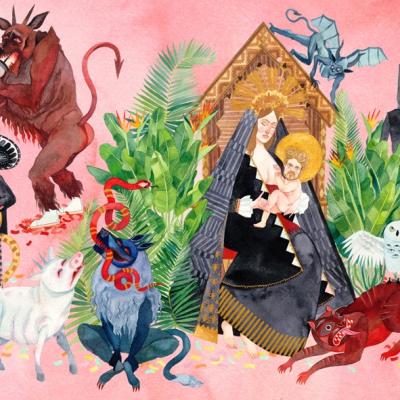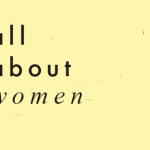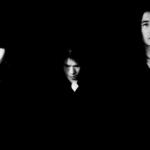As you may have heard, Paul Thomas Anderson's latest film Inherent Vice is hitting Australian cinemas on March 12. Any movie from the director of Boogie Nights, Magnolia, Punch-Drunk Love and There Will Be Blood is an event, but Inherent Vice is extra special. Why? you ask; because Inherent Vice marks the first time that the impossibly reclusive, pyrotechnically brilliant wordsmith Thomas Pynchon has been successfully adapted to the screen. This user's guide to Thomas Pynchon will explain why, whether you like Inherent Vice or not, you should delve deeper into the work of this master novelist.
It's no surprise that Inherent Vice is the first Pynchon novel to be adapted for the screen. Its pot smoke-wreathed murder mystery is one of Pynchon's most straightforward stories (though it's still a big headscratcher) and its hero, constantly stoned P.I. Larry "Doc" Sportello his most relatable. Rife with paranoia and looming darkness, Inherent Vice is a look back on a turbulent and troubling time for America and the world. It may be odd, surreal and unhinged, but Inherent Vice's lurking bad vibes make it far more real that you would expect.
Thomas Pynchon, along with contemporaries like Philip Roth and Don DeLillo, is a poster child for post-modernism. Post-modernism is a prickly term, regardless of what medium you're talking about. On The Simpsons (for which Pynchon, appearing with a paper bag over his head, voiced himself twice), miserable bartender Moe described po-mo as "Weird for the sake of weird." Initial reactions to Thomas Pynchon's wild, woolly prose might be the same, and that assessment isn't terribly far off.
Post-modernism isn't supposed to be a dry, lofty-minded intellectual exercise; in the hands of Thomas Pynchon, post-modernism is absurd fun - hilarious, shocking and frightening all at once. Post-modernism is stoner humour told by poets, fine champagne mixed with cordial. Populated with characters bearing names like Benny Profane, Mike Fallopian, Teddy Bloat and Japonica Fenway whose actions throw logic and sanity out the window, entering a Thomas Pynchon novel is not unlike tumbling head first down a dark rabbit hole.
Most of Pynchon's novels are, on the surface, historical novels. Gravity's Rainbow (1973), which is often considered his best work, is set during the Second World War, in America and Europe, in lusty fever dreams, in absurd superhero stories and one particularly noteworthy sequence inside of a toilet. Pynchon's novels take cultures and sub-cultures and canonised events and bend them through the lens of Pynchon's wryly humorous and all-seeing gaze. He unpicks the threadbare poncho of the bohemian life in V. (1963), exposes the lie of the American bourgeoisie in The Crying of Lot 49 (1966) and blows off the mask of the hippie idealism of late '60s California in Inherent Vice, which was first published in 2009.
Pynchon twists and subverts things to make us see differently. He opens up new avenues of thought and new ways of looking at things through all the tropes of the modern world. So skilled is he as an auteur that he even created post-modern cannon fodder out of the American Revolutionary War in Mason & Dixon (1997). When you finally emerge from the rabbit hole, the way you think about literature might have been changed. The way you think about history and the future and the world might have been changed.
In 1974, there was no Pulitzer Prize for Fiction awarded. That is because the Pulitzer jury on fiction unanimously selected Gravity's Rainbow, only for the Pulitzer Board to find the book to be vulgar and offensive. A great work of art, or a low piece of trash? Why can't it be both? Thomas Pynchon's collision of the sacred and the profane - an enormous and beautifully deployed vocabulary telling surreal, often violent stories of perversion and filth - has the potential to change your perspective. Delve deeper than what was deemed accessible and marketable enough to become Major Motion Picture. You won't regret it.








